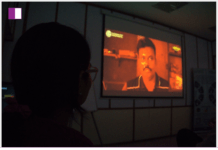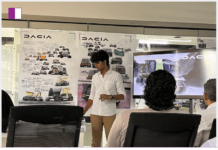Ankur Mehrol has rightly pointed out that employees don’t leave jobs; they leave toxic cultures. In today’s fast-paced corporate world, companies often focus on business growth and strategy, overlooking the fundamental factor that drives successwork culture. When employees feel valued, supported, and respected, they perform better and stay longer in an organization. However, when toxicity seeps into the workplace through poor management, delayed salaries, or lack of acknowledgment, even the most dedicated professionals begin to look for the exit door.
Ankur Mehrol emphasizes the importance of fostering a work environment where employees thrive instead of merely surviving. Creating a culture that promotes flexibility, communication, and continuous support is the foundation of any successful organization. Companies must understand that an employee’s well-being is as important as their productivity. By implementing a positive work culture, businesses can not only retain talent but also enhance overall performance and job satisfaction.
Understanding the Impact of Toxicity in the Workplace
Ankur Mehrol highlights that toxic workplaces are often defined by untrained managers, delayed salaries, lack of appreciation, and poor communication. These factors contribute to stress, dissatisfaction, and burnout. When employees constantly feel unappreciated, micromanaged, or unsupported, their morale takes a hit. This results in decreased productivity, increased absenteeism, and ultimately, high employee turnover.
Organizations need to acknowledge that a toxic work culture does not develop overnight. It is a gradual process that stems from ineffective leadership, rigid policies, and a lack of employee engagement. Ankur Mehrol suggests that founders and employers must proactively work toward addressing these issues by identifying the root causes and making meaningful changes.
Creating a Positive Work Culture
Ankur Mehrol provides practical solutions for cultivating a workplace where employees feel motivated and engaged. Here’s how businesses can achieve this transformation:
1. Make Room for Flexibility
In an era where work-life balance is crucial, rigid schedules can be counterproductive. Offering flexible working hours or remote work options allows employees to be more productive and satisfied. Ankur Mehrol believes that trusting employees to manage their time efficiently leads to a healthier work environment.
2. Provide Continuous Support
Support from management can make all the difference in an employee’s experience. Leaders should be approachable, provide clear guidance, and ensure their team has the resources needed to succeed. Ankur Mehrol suggests that when employees feel supported, they are more likely to stay committed and motivated.
3. Acknowledge Good Work
Recognition plays a crucial role in employee engagement. A simple “thank you” or an acknowledgment of hard work can boost morale significantly. Ankur Mehrol emphasizes the need for organizations to develop a culture of appreciation where efforts are noticed and rewarded.
4. Train Managers Effectively
A well-trained manager can make a significant impact on team performance. Managers should be equipped with leadership skills, emotional intelligence, and conflict resolution strategies. Ankur Mehrol insists that a strong management team is essential for fostering a healthy work culture.
5. Encourage Open Communication
Ankur Mehrol underscores the importance of transparent and honest communication. Employees should feel comfortable expressing their concerns without fear of repercussions. Organizations that prioritize open dialogue create a more inclusive and engaged workforce.
6. Incorporate Changes at an Individual Level
Rather than implementing one-size-fits-all solutions, companies should tailor their approach to individual employee needs. Ankur Mehrol suggests that understanding different personality types, strengths, and weaknesses can help leaders create a more personalized and effective work environment.
7. Analyze Current Practices and Policies
Organizations should regularly review their existing policies to ensure they align with employee well-being. Ankur Mehrol advocates for conducting employee surveys, gathering feedback, and making necessary adjustments to improve workplace conditions.
8. Understand Employee Needs and Personality Types
Every employee is different, and understanding their unique needs can help create a more harmonious work culture. Ankur Mehrol highlights that when leaders take the time to recognize individual strengths and weaknesses, they can allocate tasks more effectively and create a supportive environment.
The Responsibility of Founders and Employers
Ankur Mehrol believes that company culture is a direct reflection of its leadership. Founders and employers must take responsibility for shaping an environment that nurtures growth and positivity. Too often, organizations focus solely on profit and efficiency, neglecting the human aspect of business. Employees are the backbone of any company, and when they feel valued, they contribute more effectively to its success.
It is crucial for business leaders to actively listen to their employees, address their concerns, and implement constructive changes. Ankur Mehrol stresses that fostering a culture of respect, recognition, and collaboration will ultimately lead to a happier and more productive workforce.
Moving Towards a Happier Work Environment
Ankur Mehrol’s insights serve as a wake-up call for organizations that struggle with high employee turnover and dissatisfaction. A toxic culture does not just impact individual employees; it affects overall company performance. When employees dread coming to work, creativity and efficiency suffer. On the other hand, a positive workplace encourages innovation, loyalty, and long-term success.
If businesses want to thrive, they must invest in their employees’ well-being. By implementing the principles Ankur Mehrol outlines, companies can create a culture where employees feel empowered and engaged. A happy workplace is not just beneficial for employeesit is a strategic advantage that leads to sustained growth and success.
Final Thoughts
Ankur Mehrol’s message is clear: businesses must prioritize workplace culture just as much as they prioritize revenue and strategy. Toxic environments drive away talent, while positive workspaces attract and retain the best employees. Organizations that genuinely care about their workforce will reap the benefits of a motivated, high-performing team.
As professionals, leaders, and entrepreneurs, we must all ask ourselves: Are we contributing to a workplace that uplifts people, or are we allowing toxicity to take root? The answer to this question will define the future of work culture in our organizations.
Repost this if you agree, and let’s work together to create a better professional world.





































